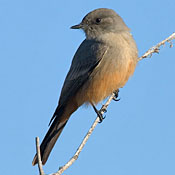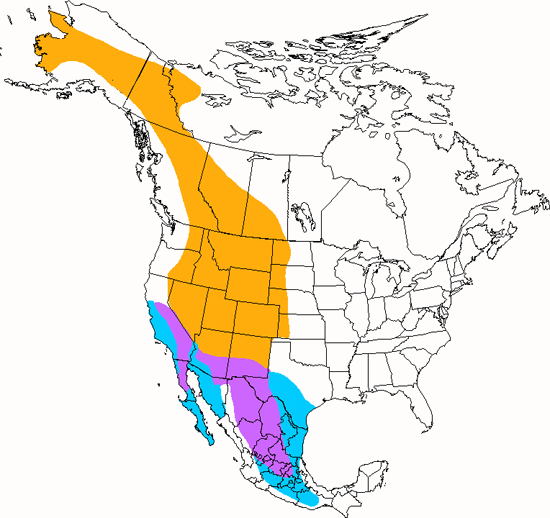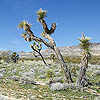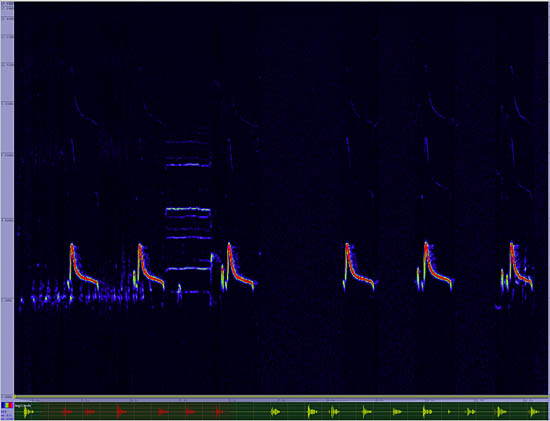Say's Phoebe
Sayornis saya

Perching

Length: 8 in. (20 cm )
Sitting at the top of the highest point in open fields and savannas, the Say\'s Phoebe is a conspicuous flycatcher always looking for an insect. In agricultural fields, Alaskan cliff faces and rural homes and barns, individuals or pairs sit upright wagging their tails up and down. They make their nest of grass and moss and stick it onto shady protected parts of cliffs, buildings, or bridges. Frequently this species hovers over a point in a field waiting to pounce on an insect crawling along the ground.
The four-digit banding code is SAPH.
Bibliographic details:
- Article: Say's Phoebe
- Author(s): Dr. Biology
- Publisher: Arizona State University School of Life Sciences Ask A Biologist
- Site name: ASU - Ask A Biologist
- Date published: 13 Jul, 2017
- Date accessed: 24 May, 2025
- Link: https://askabiologist.asu.edu/activities/bird/says-phoebe
APA Style
Dr. Biology. (Thu, 07/13/2017 - 15:37). Say's Phoebe. ASU - Ask A Biologist. Retrieved from https://askabiologist.asu.edu/activities/bird/says-phoebe
Chicago Manual of Style
Dr. Biology. "Say's Phoebe". ASU - Ask A Biologist. 13 Jul 2017. https://askabiologist.asu.edu/activities/bird/says-phoebe
MLA 2017 Style
Dr. Biology. "Say's Phoebe". ASU - Ask A Biologist. 13 Jul 2017. ASU - Ask A Biologist, Web. https://askabiologist.asu.edu/activities/bird/says-phoebe
Be Part of
Ask A Biologist
By volunteering, or simply sending us feedback on the site. Scientists, teachers, writers, illustrators, and translators are all important to the program. If you are interested in helping with the website we have a Volunteers page to get the process started.










